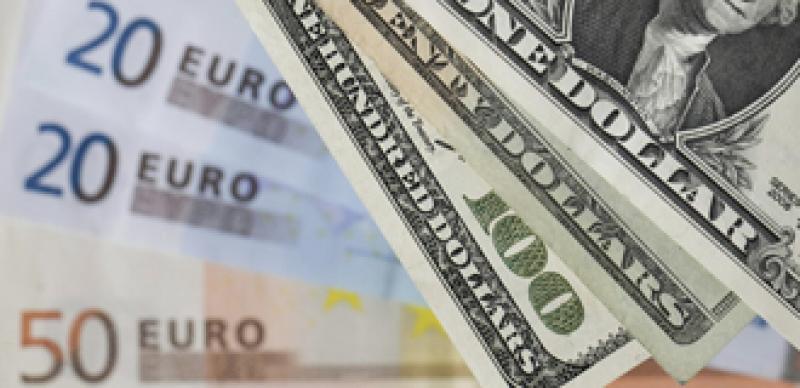The images from Cairo’s Tahrir Square were stunning. Tens of thousands of protesters took to the streets of the Egyptian capital to demand change and a voice in forging their country’s future. And after just two short weeks, they succeeded last month in ousting one of the Middle East’s longest-serving rulers, President Hosni Mubarak, and advancing a wave of popular uprisings across the region.
It is much too soon to tell how far the so-called Jasmine Revolution will spread, or whether it will leave those societies better or worse off ultimately. The historic events that began in December after a Tunisian street vendor set himself on fire as a protest quickly swept away long-standing notions about the nature of stability across the Middle East and North Africa, but it’s far from clear that the region can establish new leaders, institutions and political systems to replace the old autocracies.
The uncertainty is palpable among sovereign-credit analysts at major banks and asset managers. The average credit rating of countries in the Middle East and North Africa is effectively unchanged in Institutional Investor’s semiannual Country Credit survey, at 55.6 on a scale of zero to 100, down a statistically insignificant 0.1 point from six months ago. However, voting for the survey was conducted in November and December, before the uprisings broke out. A snap poll of survey respondents taken late last month shows a sharp drop in ratings across the region but mixed views on whether the political tumult will prove positive or negative in the long run. Egypt’s rating plunges to 37.4 in the snap poll, from 51.1 in the regular survey, for instance. Although half of the snap poll respondents say they believe political change will have a very negative or somewhat negative impact on the country’s creditworthiness over the next three to five years, the other half say the impact will be neutral or somewhat positive.
Most respondents in the snap poll also say they regard regime change as highly likely to occur in the next two to three years in Libya and Yemen; somewhat likely in Algeria, Bahrain and Lebanon; and unlikely or very unlikely in Qatar, Saudi Arabia and the United Arab Emirates. (See detailed results at March 2011 Country Credit Survey)
For analysts accustomed to making incremental changes in most ratings, assessing the impact of such revolutionary events is fraught with risk. “It’s way too soon to tell” the long-term impact of the political changes, says Veronika Lustig, a credit portfolio manager at Nord/LB in Hannover, Germany. “There’s still so much going on. Every Friday some things seem settled, and on Monday it’s a different story.” Jankiel Santos, chief economist at BES Investimento do Brasil in São Paulo, regards the spread of the unrest as worrying. “The perspective of generalized turmoil in the region is increasing,” he says. “And it is difficult to say those guys are going to deal with the popular pressure in a good way. Someone is going to do something stupid. So I believe we’re going to see some worsening of conditions there.”
The Middle East is an extreme example, to be sure, but uncertainty clouds the creditworthiness outlook in much of the rest of the world too. The average rating of the 178 countries covered rises a modest 0.3 point from the previous survey in September 2010, to 46.5, but the increase largely reflects gains in developed nations, where growing debts cloud the long-term outlook. Emerging markets also present a mixed picture, with widespread gains in Asia but a fair number of declines muddying the picture in Eastern Europe/Central Asia and Latin America and weakness prevailing in sub-Saharan Africa.
In Western Europe the average rating climbs 2.8 points, as 18 of the 19 countries see their ratings rise while the rating of only one country — Ireland — falls. The region accounts for five of the top eight gainers in the survey, with the U.K. rising 6.3 points (an apparent vote of confidence for the Conservative government’s budget-cutting policies), Italy gaining 6.0 points, austerity-minded Spain up 5.3 points, Austria rising 4.9 points and Denmark advancing 4.6 points. The increases represent only a partial reversal of the steep declines that followed the global economic crisis in late 2008 and early 2009 and the outbreak of Europe’s debt crisis last year, however. The region’s current average rating of 80.9 is well below the peak of 91.1 reached in March 2008. Greece rises 3.0 points in the latest survey, to 46.9, but is still far below its March 2008 level of 81.1; Spain gains 5.3 points, but its rating of 72.0 is more than 17 points below its level of three years ago.
The rebound bypassed Ireland, where the massive cost of bailing out the banking system forced the country to seek a €85 billion ($113 billion) bailout from the European Union and International Monetary Fund and triggered the collapse of the Fianna Fáil government. The Fine Gael party swept last month’s early elections after promising to renegotiate the terms of the bailout. Ireland’s rating falls 6.5 points, to 61.0; it drops ten places in the overall ranking to No. 53, behind Peru and Botswana.
Narrowing credit spreads, a successful first bond issue by the European Financial Stability Facility and a pledge by French President Nicolas Sarkozy and German Chancellor Angela Merkel to forge an EU agreement on long-term budgetary and economic reforms have helped boost confidence that Europe’s debt problems are “reasonably small and solvable,” says John Peta, a senior vice president and portfolio manager at Acadian Asset Management in Boston. “While the jury is still out on Greece, the longer they limp along means they are more likely to make it without defaulting.”
Yet many have doubts about the outlook. When asked to name the countries most likely to exhibit higher credit risk in the next 12 months, respondents put Portugal, Spain, Ireland, Greece and Italy at the top of the list.
Respondents show a similar ambivalence about the U.S., where a new Republican majority in the House of Representatives led by speaker John Boehner is pushing for deep cuts in federal spending to narrow the deficit. The country’s rating edges up 0.7 point, to 91.4, but it falls three places on the table to ninth spot, overtaken by improving Sweden, Luxembourg and Finland.
In January, Standard & Poor’s and Moody’s Investors Service warned that they might downgrade the outlook on the nation’s triple-A rating, to negative, if Washington doesn’t start reining in its budget deficit. Survey respondents rate the U.S. in eighth place among countries most likely to pose a higher credit risk in 12 months. And when asked which countries will suffer the most prolonged damage from the credit crisis, the U.S. ranks third, behind only Spain and the U.K.
In contrast to the ambiguities in Western Europe and the U.S., the industrialized nations of Asia offer a less-nuanced story. Australia rises 2.3 points; New Zealand is up 4.2 points; and Singapore and Taiwan each rise 1.4 points, while South Korea posts a more-modest gain of 0.8 point. “They’ve had a good crisis — a very sharp correction — from which they’ve rebounded quite quickly and remarkably strongly,” says Christine Shields, head of country risk research at Standard Chartered Bank in London. “These countries are benefiting from demand from China.” China itself posts a rise of just 0.4 point, as concerns about inflation dampen enthusiasm about the country’s relentless growth.
The big surprise in Asia is Japan, which rises 4.5 points, to 85.3, and captures the ninth-largest gain in the survey. The increase comes even as doubts persist about the country’s ability to service its massive debts. S&P in January downgraded Japan’s long-term sovereign debt by one notch, to AA-, and Moody’s in February announced that it was downgrading its outlook for Japan from stable to negative. Philippe Ferreira, an economist in the risk department of Société Générale in Paris, says Japan is benefiting from signs of economic strength. “GDP figures were higher than expected, and Japanese corporates are taking advantage of development in the greater Asian region,” he notes.
Asia’s emerging markets offer a more complicated picture, as the rating of seven nations rise by 1 point or more and those of five fall. Thailand climbs 4.1 points because, Shields says, “they’ve got political troubles rumbling on in the background, but the economy is performing well.” Elsewhere in Southeast Asia, Vietnam declines by 1.8 points. “They have a kind of strategic inconsistency in that their policy is very much focused on investment-led growth and, meanwhile, inflation has been fueled — so they need periodic devaluations because they haven’t got the reserve coverage they need to maintain the peg,” explains one European banker.
In Central and Eastern Europe, the Baltic countries rise smartly, with Estonia jumping 7.9 points, Latvia gaining 4.0 points and Lithuania up 2.7 points. “They were very hard hit by the crisis, but at the end of the day, it looks like they handled the problems quite well,” says SocGen’s Ferreira. The same reasoning drives increases for the Czech Republic (up 2.0 points), Slovakia (up 3.6 points) and Turkey (up 1.5 points). Russia falls 1.2 points, however, to 65.2, in spite of stronger oil prices. One reason for the fall, says Nord/LB’s Lustig, may be that the recent legal proceedings involving former Yukos CEO Mikhail Khodorkovsky have revived concerns about Russia’s political system.
In Latin America and the Caribbean, ratings of 11 of the 29 countries rise by 1 point or more and eight fall. Buoyant commodities prices lift several Latin American countries, while many Caribbean countries, which have lost U.S. tourist revenues in the recession, post declines. Brazil falls 1.3 points, to 68.5, despite the country’s continued strong economic performance. Opinion on the outlook for Brazil is surprisingly polarized. Survey participants give it the most votes on the list of countries deemed most likely to exhibit lower credit risk in the next 12 months, but Brazil is also 11th on the list of countries most likely to exhibit higher credit risk in the coming year.
There is less optimism regarding sub-Saharan Africa, as the ratings of 23 nations fall by at least 1 point while those of only eight rise. “Many African nations were getting a little ahead of themselves, and this was more of what we might call a technical adjustment than a response to specific developments,” says one French banker.
Looking ahead, the creditworthiness of sovereign debt faces “a couple of big headwinds,” says Jonathan Lemco, a principal and senior analyst at Vanguard Group. The first one is the Middle East, where neither the direction and the pace nor the scale of political change is clear, he says. The other headwind is inflation, he adds. Those two forces are interwoven because turmoil in the Middle East inevitably causes oil prices to rise, and that only fuels inflationary pressures around the world.
“If we get past those two big issues,” says Lemco, “on balance the world is getting better. More countries are showing good fiscal prudence, more central banks are pursuing reasonable policies, and more people are emerging from poverty into the middle class, especially in China and India but also in Indonesia and some Latin countries.”
Growing competition for money as the global recovery continues also poses a risk, says Standard Chartered’s Shields. “There are going to be challenges for countries that need to raise finance because there is going to be much demand for refinancing by sovereigns and corporates and, of course, by the banks,” she says.






